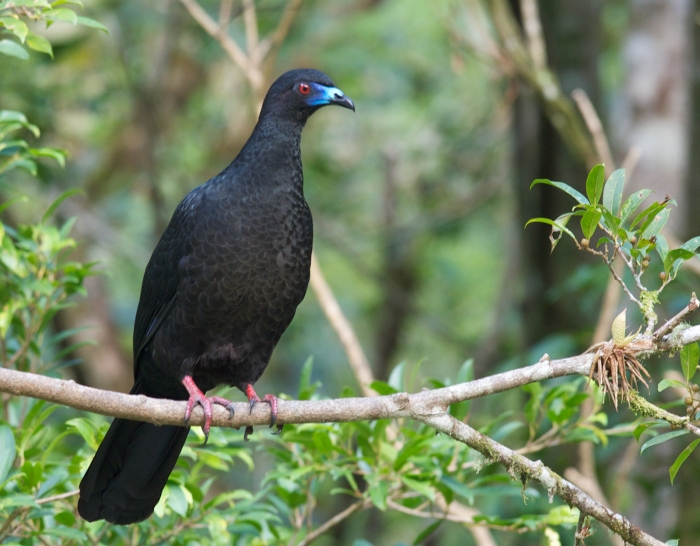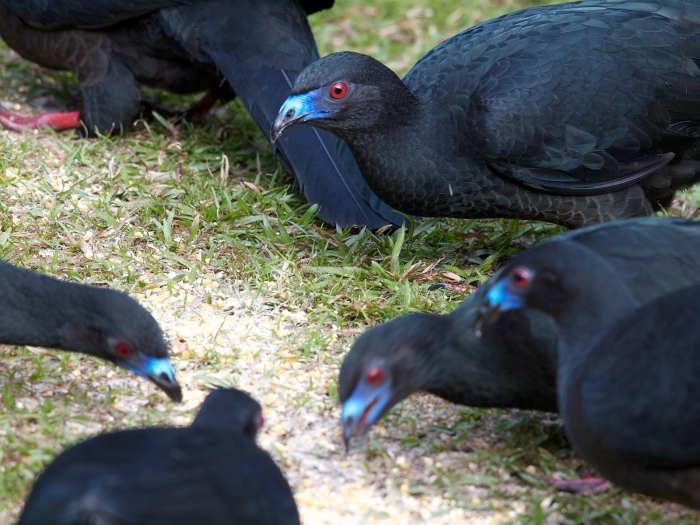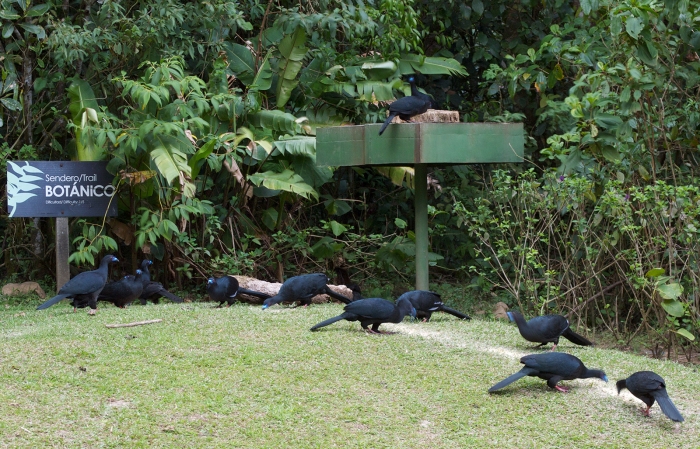Return of Bird of the Week: Black Guan
While there are many other species of Curassow, WC hasn’t been able to photograph them, so we’ll switch to another clade of Cracidae, the Guans. And we’ll start with the Black Guan.

Black Guan, Costa Rica
It’s not a bird you’re likely to confuse with any other: black body, blue nares, bright red legs and bright red eye, it’s an arboreal cracid (WC likes that description and worked to find a way to get it into the blog post). It’s considerably smaller than the Curassows; just 69 centimeters long and weights a little over a kilogram.
It’s less vocal than other guans, it’s unusual in being attracted to fruit feeding stations. That’s the good news; the bad news is also that it’s attracted to fruit feeders, where it typically consumes everything put out and drives away all other species.
There are a few ecolodges where it is present in amazing numbers.

Black Guan, Costa Rica

Black Guan, Costa Rica
After a while, the charm wears off. Our guide did say that this single site produced more Black Guans than any other he knew.
This is a mountain cloudforest species. It prefers steep terrain with ridges and ravines, but does occasionally enter more open areas. It’s generally found between 1,000 to 3,100 meters.
Ornithology doesn’t know an awful lot about this species. Nests seem to be platforms constructed among or in epiphytes, general three to five meters above the forest floor. There are 2-3 eggs. The chicks are precocial, meaning they leave the nest soon after hatching and follow the parents around.
Whle they have vocalizations, WC has never heard them, but you can’t miss the species’ “alarm call,” which isn’t a call at all but rather consists of loud, sharp, crackling wing-rattling noises.
They are not globally threatened, but some local populations are declining.
For more bird photographs, please visit Frozen Feather Images.